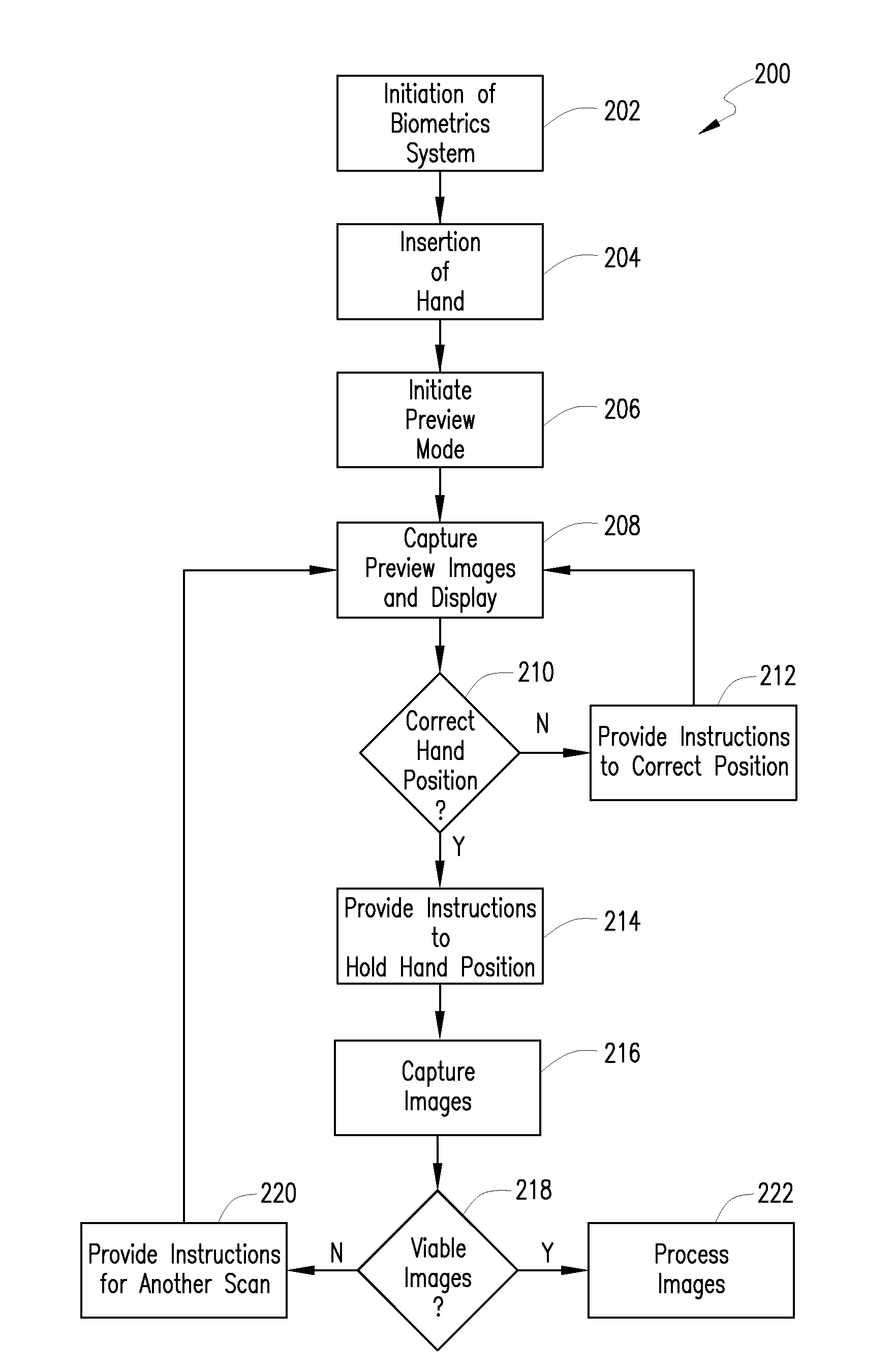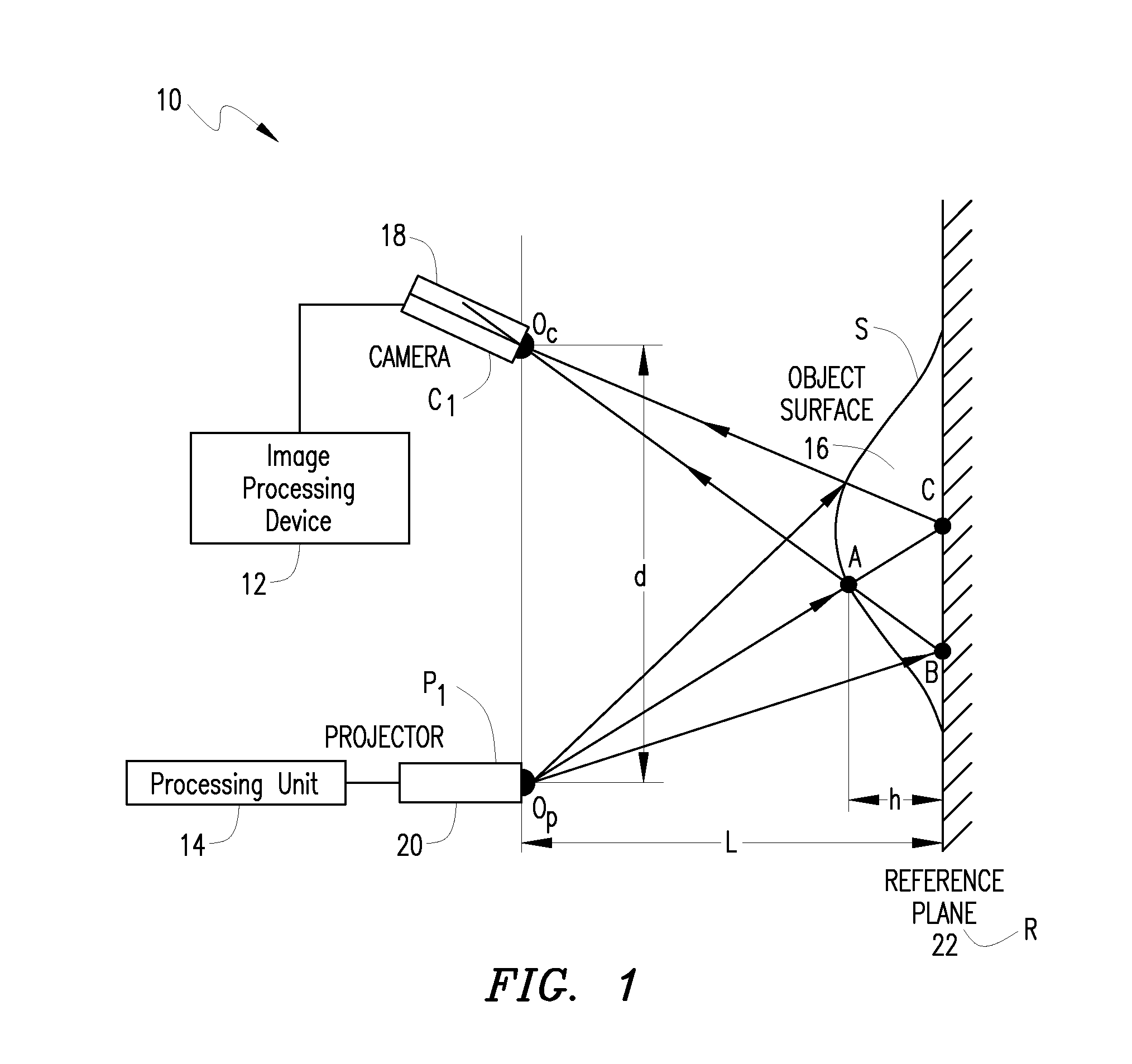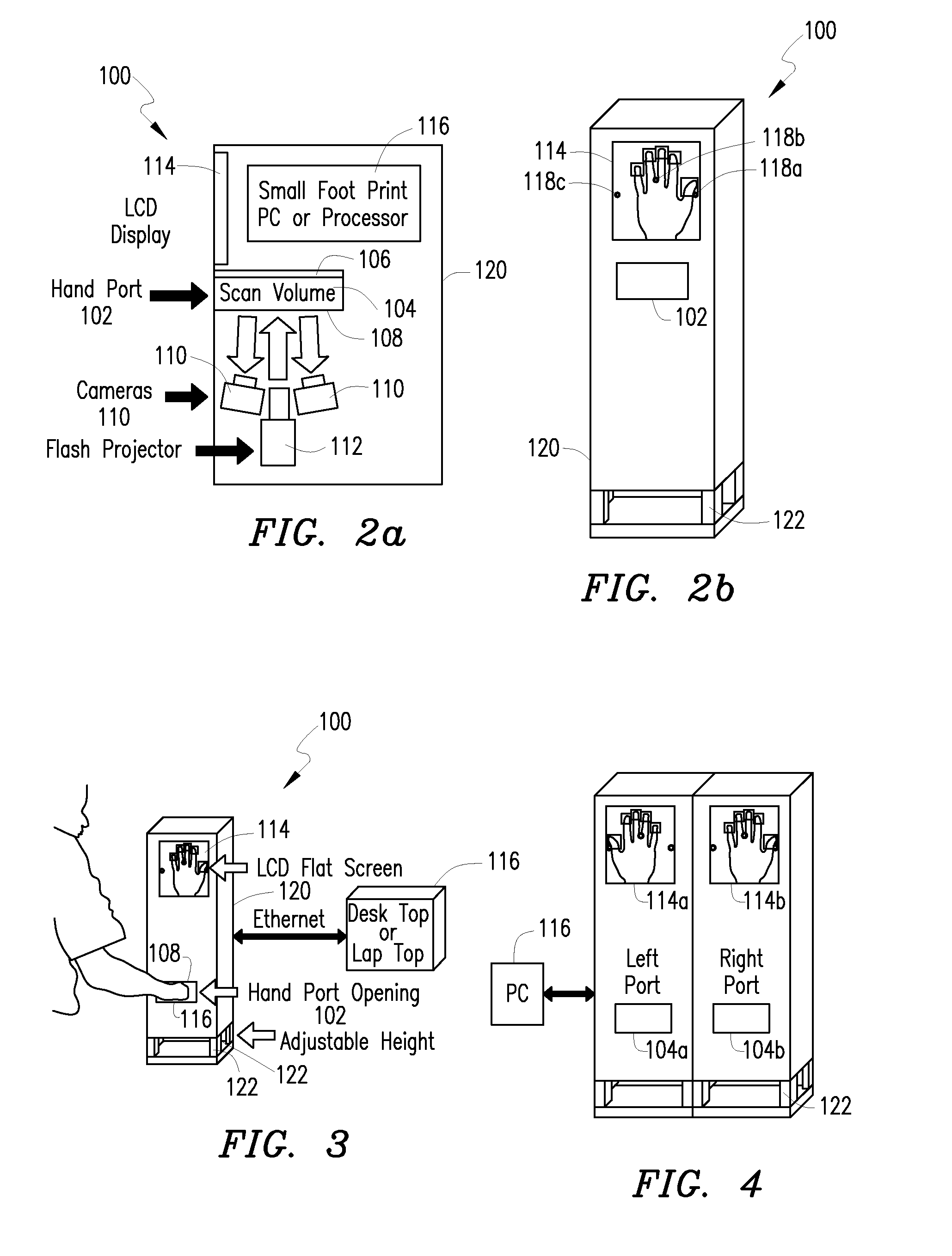System and method for 3D imaging using structured light illumination
a structured light and illumination technology, applied in the field of biometrics, can solve the problems of poor quality of finger prints and palm prints, slow and cumbersome rolled ink print technique, and many limitations of the above-described known process of rolling an inked fingerprin
- Summary
- Abstract
- Description
- Claims
- Application Information
AI Technical Summary
Benefits of technology
Problems solved by technology
Method used
Image
Examples
Embodiment Construction
[0031]The present invention is best understood in relation to FIGS. 1 through 15 of the drawings, like numerals being used for similar elements of the various drawings. The following description includes various specific embodiments of the invention but a person of skill in the art will appreciate that the present invention may be practiced without limitation to the specific details of the embodiments described herein.
[0032]One approach to creating a 3D image is called a structured light illumination (SLI) technique. In SLI technique, a light pattern is projected onto a 3D object surface. FIG. 1 shows an example SLI system 10. In FIG. 1, the SLI system 10 includes a camera 18 and projector 20. The 3D object 14 is placed at a reference plane 22 that is a predetermined distance L from the projector 20 and camera 18. In this example, the projector 20 and camera 18 are in the same plane with respect to each other to simplify calculations, but such positioning is not required.
[0033]In us...
PUM
 Login to View More
Login to View More Abstract
Description
Claims
Application Information
 Login to View More
Login to View More - R&D
- Intellectual Property
- Life Sciences
- Materials
- Tech Scout
- Unparalleled Data Quality
- Higher Quality Content
- 60% Fewer Hallucinations
Browse by: Latest US Patents, China's latest patents, Technical Efficacy Thesaurus, Application Domain, Technology Topic, Popular Technical Reports.
© 2025 PatSnap. All rights reserved.Legal|Privacy policy|Modern Slavery Act Transparency Statement|Sitemap|About US| Contact US: help@patsnap.com



